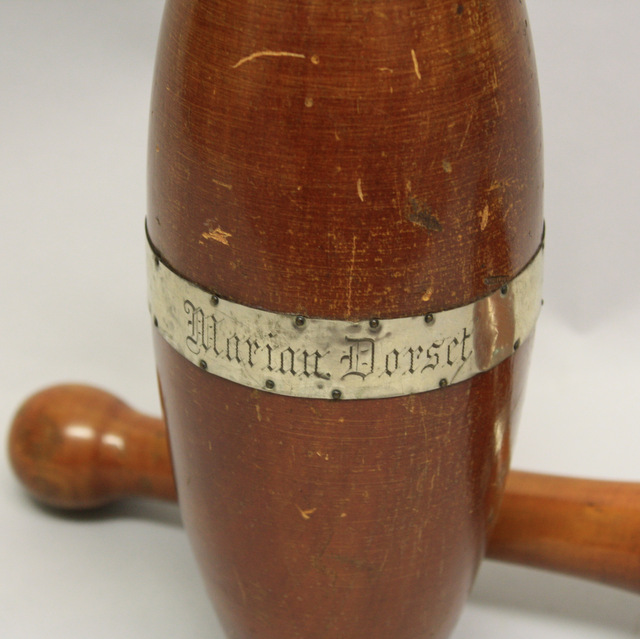Copyright La Crosse County Historical Society
Michelle Kelly
Catalog Number: 2018.015.01
While they look like bowling pins, and the word “club” invokes ideas of weapons, Indian clubs are, in fact, a very old method of exercise.
They originated in ancient Persia, where they were called meels or mils. They were a training tool for the zourkhāneh, a group of men who met to practice grappling (wrestling) and patriotism. Over time meels were carried by different cultural groups into India, where the practice of training with meels continued for centuries.
Copyright La Crosse County Historical Society
When the British invaded India in the 19th century, the colonists saw the use of meels and coined them as “Indian clubs.” They were unconcerned with the rich history of Mongols and Moghuls behind the exercise tool.
The colonists brought Indian clubs back to Britain, where they were quickly adapted into the new fitness craze of the Victorian Era. An visiting American by the name of Sim D. Kehoe brought the concept back to the states, where he began to manufacture and sell them.
Indian clubs were widely used in both Britain and the United States by men and women. Men used them in police and military academies and women in newly-built gymnasiums. They became so popular in the early 20th century that Indian clubs were a precursor to Rhythmic Gymnastics in the 1904 and 1932 Olympics. Gymnasts used Indian clubs in rhythmic routines as opposed to the now-used ropes, ribbons, and bells.
Interestingly, the “club” part of their name became a reality in 1913/1914 when the British Suffragette movement used their Indian clubs as actual clubs. The ladies concealed the exercise tool in their clothes in case the British police used their batons on them.
As organized sports and regimented fitness routines became the norm, Indian clubs went out of fashion. For a short time they were used by professional athletes and the military as training tools, but better equipment was developed and Indian clubs became old-fashioned--the way of the past. Only in the 21st century have they started to make a return to fitness routines.
The La Crosse County Historical Society has a few examples of Indian clubs in their collection. The set pictured was the personal pair of Marian Dorset, daughter of Nannie Colwell-Dorset and Reverend Charles Dorset, who were early residents in the young city of La Crosse. These Indian clubs were a recent donation from John Satory. When Satory was young, he purchased them at the Dorset-Colwell estate auction after the death of Marian’s sister Helen.
Dorset’s pair of Indian clubs weigh in at only 10.6 ounces, less than 3/4ths of a pound. For reference, Indian clubs could weigh upwards of 100 pounds. They could also be as ornate or simple as the user wished. Marian Dorset’s set is rather elaborate in comparison to the other plain wooden painted clubs in the collection. Dorset’s clubs are made of a polished red wood with a simple handle and detailed silver ring embellishments. Marian Dorset’s name is engraved on a silver ring in the middle of each of the clubs; in essence, she had personalized gym equipment.
This article was originally published in the La Crosse Tribune on June 16, 2018.
This object can be viewed in our online collections database by clicking here.





